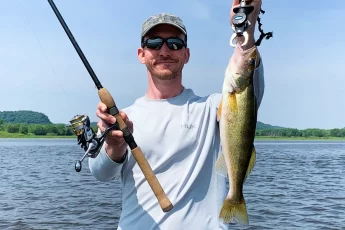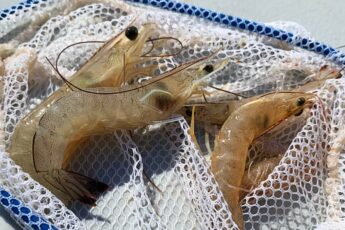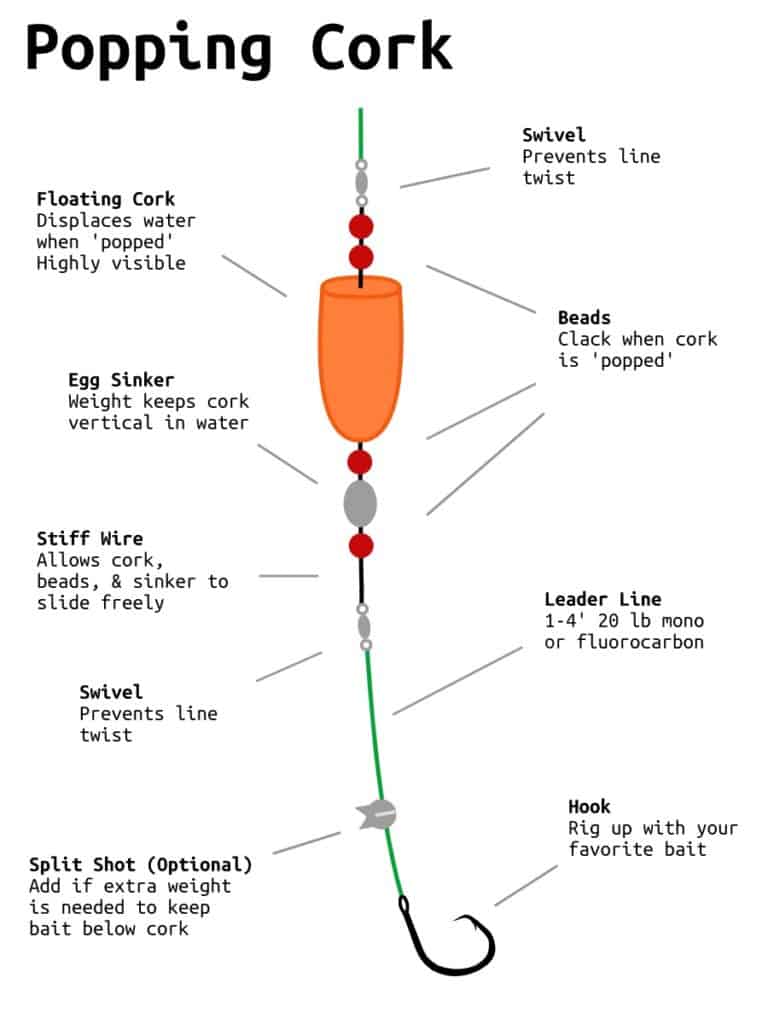
More inshore fish have probably been caught using a popping cork than every other fishing method combined. There is a reason inshore fishing guides hand most of their customers a fishing rod tied with a popping cork.
What’s not to like? Popping corks are beginner friendly, great for covering water, and plain catch fish. Popping corks are best known for catching speckled trout and redfish but will also work for flounder, black drum, snook, and striped bass.
If you want to consistently catch inshore fish, you need to know how to fish a popping cork. This article covers:
- What is a Popping Cork?
- Why Fish a Popping Cork?
- How to tie a Popping Cork?
- How to Fish a Popping Cork?
- When to Use a Popping Cork?
- Best Popping Cork Tackle and Rigs
- Popping Cork Frequently Asked Questions
*Disclosure: I only recommend products I would use myself and all opinions expressed here are my own. This post may contain affiliate links that at no additional cost to you, I may earn a small commission.
What is a Popping Cork?
A popping cork is a 3 to 6 inch float made of foam or plastic. Live bait or artificial lures are suspended 1 to 4 feet below the popping cork. Anglers will twitch or ‘pop’ the cork periodically to create a surface commotion that simulates surface feeding activity or bait fleeing from predators.

Popping cork components include:
- A stiff wire that allows the other components to slide back and forth
- A bright float made of foam or plastic. Displaces water when ‘popped’
- Beads that clack when the cork is ‘popped’
- An egg sinker to weigh the rig down and keep the float vertical in the water
Why Use a Popping Cork?
Popping corks are easy to use and highly effective. If you want to stock the freezer with fresh fillets, rig up a popping cork. Key reasons to use a popping cork include:
- Desirable bait presentation for full duration of retrieve
- Won’t snag the bottom – popping corks are floating rigs!
- Easy to cast far – popping corks weigh enough they are easy to cast a long distance
- Cover lots of water to find feeding fish
- Can fish with live bait or artificials.
- Easily fished by pros, beginners, and even kids
Pro Tip: Live shrimp is the classic bait pairing with a popping cork. Everything in the ocean loves shrimp. If you want to catch loads of fish, use live shrimp.
Feel confident giving a popping cork to young kids and experienced anglers alike – everyone can catch fish and have a good time!
How to Tie a Popping Cork?
To tie a popping cork, attach your main line to the top of the popping cork with your preferred fishing knot (I prefer palomar knots because they are strong and easy to tie). Below the cork, attach 1-4 ft of leader and a hook. I use 20 lb fluorocarbon line for my popping cork leaders.
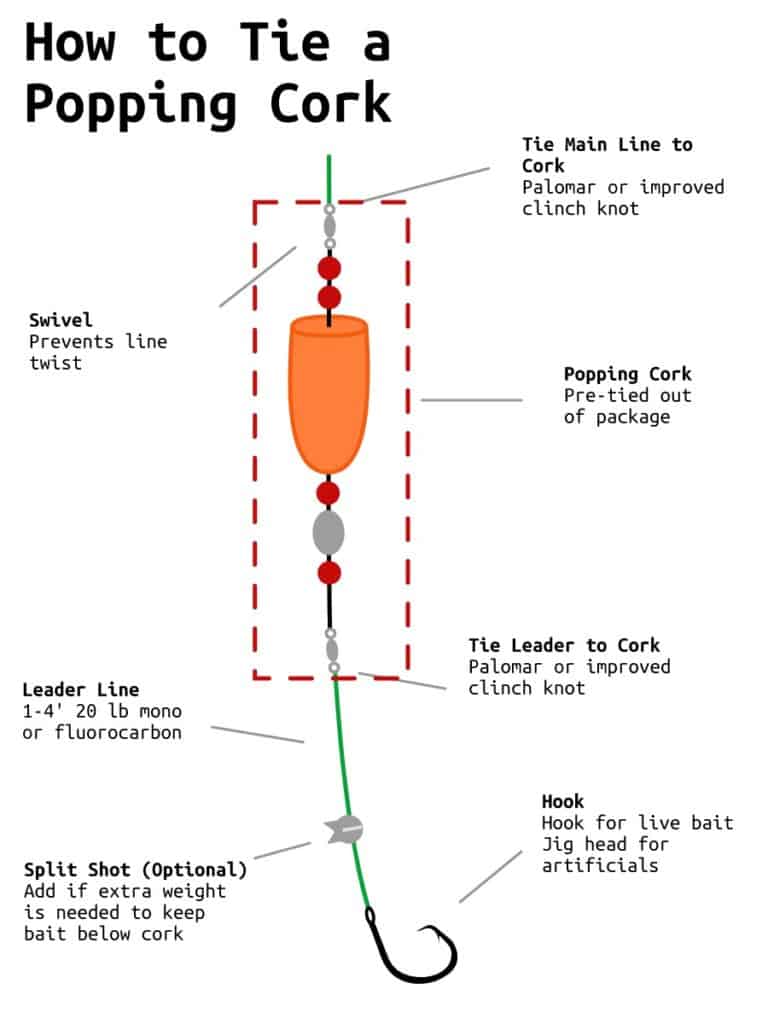
Leader length is chosen based on water depth. If fishing in two feet of water, a one foot leader is appropriate. If fishing in six feet of water, a four foot leader is appropriate. Make sure your bait is not dragging bottom or is so far above bottom that fish don’t see it. I use an 18-24” leader most of the time.
Pro Tip: Pre-tie a few popping corks in varying lengths before going fishing to quickly swap target water depths.
How to Tie a Popping Cork for Live Bait
For fishing live bait under your popping cork, use circle hooks, single bait hooks, or treble hooks. Note that treble hooks are illegal in a few places – check your local fishing regulations. Treble hooks have better hookup percentages but are much more likely to harm a fish in the process. Circle hooks are the most humane option as they tend to hook fish in the side of the mouth.
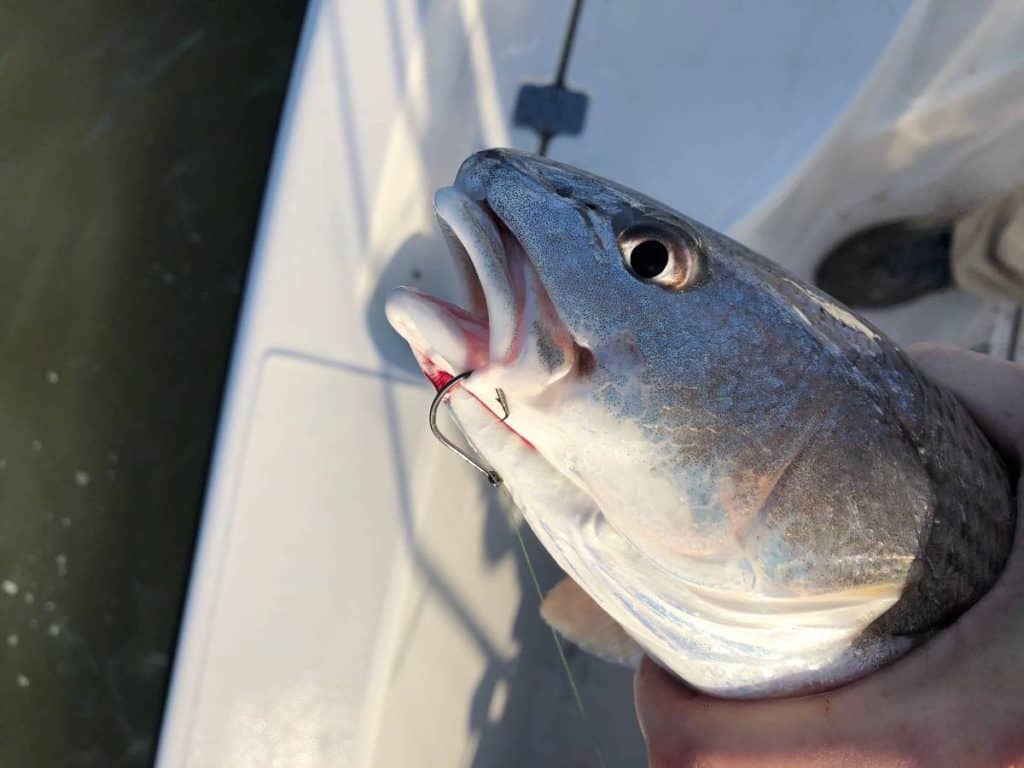
Longer leaders may require additional weight to get live bait into the strike zone. Add a split shot sinker 6 inches above your hook to keep your bait from stringing out behind your cork as you reel in.
How to Tie a Popping Cork for Artificial Bait
For fishing artificial soft plastic lures under your popping cork use a jig. Go with the lightest weight jig that will still pull your bait vertically below your popping cork. Lighter jigs fall more naturally than heavier jigs and will induce more strikes.
Pro Tip: Use a soft plastic that flutters or moves as it naturally falls after a pop. You want inquisitive fish to spot your bait. Curly tail grubs, paddletails, and shrimp imitations work well.
How to Fish a Popping Cork?
Popping corks are easy to fish effectively. Unlike other float rigs, like slip bobbers, popping corks are designed to actively draw the attention of nearby fish. Simply cast your cork out then ‘pop’ it every few seconds to simulate surface feeding activity. When a fish strikes, it will pull the cork underwater. That’s when you set the hook!
To pop the cork, reel up the slack then quickly flick the rod tip directly away from your cork. The pop should create a noise and swirl in the water. The popping action is similar to the action of ‘setting the hook’ on a fish.
I imagine the pop of a popping cork as emulating a big bass or redfish aggressively swiping at a topwater lure.
Tips for using your Popping Cork:
- Start with around a 7 second pause between pops. Try longer pauses if fish are not feeding aggressively.
- Cast with the wind. A medium breeze can easily add 10-20 yards or more to your cast. Let the wind help you cover more water.
- Match your pops to the weather conditions. Use gentle pops when it is calm and aggressive pops in rougher seas. You want to draw the attention to your cork without spooking fish.
- Keep your rod tip close to the water when you pop your cork. If your rod tip is too high you may launch your cork in the air instead of creating the chug of your cork displacing water.
Pro Tip: If you want to outfish your friends and family, keep your live bait fresh. Lively bait catches more fish. If your shrimp is dead after a few casts, change it.
When to Use a Popping Cork?
Popping corks are most effective when fishing in water depths shallower than six feet. Deeper water may be too deep for fish to notice when you pop your cork. The only time I may use a cork in water deeper than six feet is if diving birds have given away a school of trout or redfish.
Popping corks are at their best covering water drifting with the wind over underwater structure. Cast down wind and pop your cork as you drift over the structure. Try popping corks near oyster bars, channel edges, grass flats, docks, shell bars, creek mouths, or sand flats. If you start catching fish either repeat the same drift or anchor up and see if there are more fish.
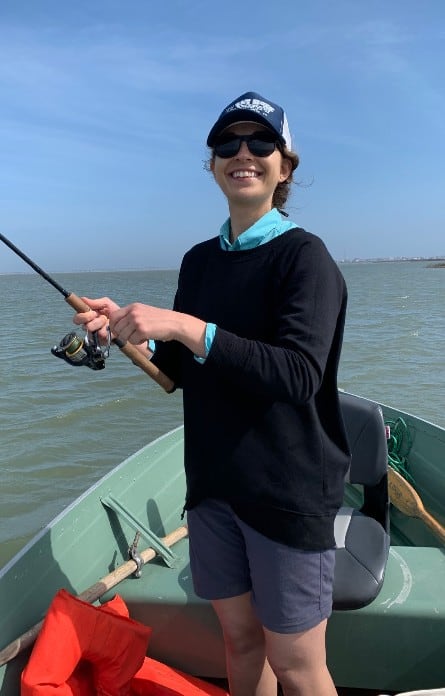
Best Popping Cork Tackle and Rigs
Certain equipment choices will improve your comfort and chances of success when fishing with a popping cork.
Best Rod and Reel Options
The best rod for popping cork fishing is a 7 to 8 foot medium to medium heavy rod with a fast tip. Pick your favorite rod manufacturer. Popping cork rods should be long to facilitate longer casts with a sturdy backbone to comfortably pop the cork.
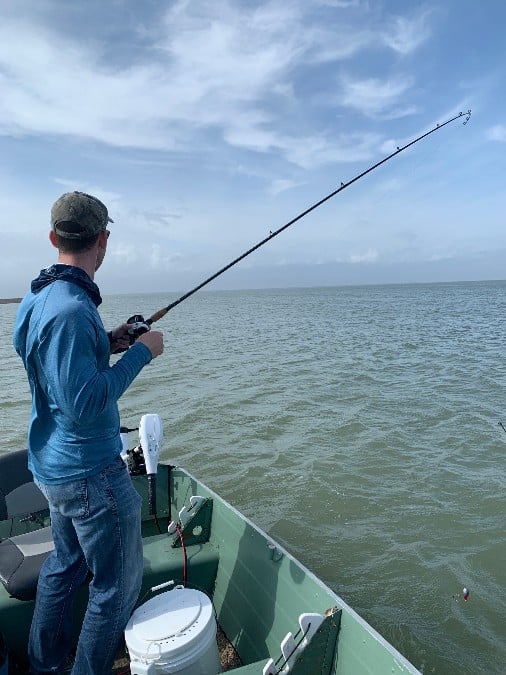
Popping corks can be effectively fished with spinning reels or baitcaster reels. Pick what type of reel you prefer. If you are tutoring a beginner or a kid on how to fish they will be more comfortable with a spinning reel setup.
Check out our related rod articles for solid options to fish with a popping cork:
- Best Saltwater Fishing Rods
- Best Saltwater Rod & Reel Combos
- Best Inshore Fishing Rods
- Best Surf Fishing Rods
- Best Pier Fishing Rods
Check out our articles for great reels to pair with these rods:
- Best Surf Fishing Reels
- Best Saltwater Baitcasting Reels
- Best Saltwater Spinning Reels
- Best Conventional Reels
Best Line Options
Braided line is best for popping cork fishing because it doesn’t stretch. When you ‘pop’ your cork, the braided line transfers the force of your pop more effectively. This means you use less energy to pop a cork with braided line than with monofilament line.
30-40 lb braid works best for popping cork rigs. It is sturdy enough to handle the popping cork action without being overkill. For the leader, 20 lb fluorocarbon or monofilament works well.
Best Popping Corks
Popping corks come in all shapes, sizes, and colors. Bright colors are easy to spot in the water. Some have cupped tops to displace more water. Most have beads to create a clacking noise in the water when the cork is popped.
Your best bet for popping corks is to get a variety. Get some large corks and small corks in various colors to help match the weather conditions.
Try to tie your own leaders. This lets you pick your leader length. The leader line on popping corks with pre-tied leaders tends to be too large and it retains memory of being wrapped tightly in a coil. This means you need an overly heavy weight to straighten out the leader line in the water resulting in poor bait presentation.
Popping Cork Frequently Asked Questions
What to fish under a popping cork?
Live shrimp are the most effective bait to use under a popping cork, but live mullet, chunk bait, or artificial soft plastics on jigs can also catch fish. When picking soft plastics to use under a popping cork, grab a bait that will flutter in the water every time you pop the cork like a curly tail grub.
When should I use a popping cork?
Popping corks are best used in water depths between 2 and 6 feet in slightly chopping conditions. In calm conditions the popping cork popping action may spook fish instead of attract them. Popping corks are great for newer anglers because they are simple to use and catch tons of fish.
If fish are feeding deeper in the water column, switch to a bottom rig like a jig or carolina rig to increase your chances.
How long should a popping cork leader be?
A popping cork leader should be 2 to 4 feet. Use a longer leader in deeper water. Leaders much longer than 4 feet will be difficult to cast.
How to cast a popping cork?
Casting a popping cork should be a (mostly) gentle sweeping arm motion ending with your rod tip facing your target. If you whip the cast too hard, your bait may fall off during the cast. Popping cork fishing can be a bit of a game of trying for long casts without losing your bait.
Conclusion
Popping cork fishing is effective, beginner friendly, and exciting. Popping corks offer great bait presentation and are at their best covering water over submerged structure. The classic popping cork rig uses live shrimp to target speckled trout and redfish, but can catch black drum, flounder, and striped bass as well.
Feel confident that beginners and experts alike can and will catch fish under a popping cork. If fishing structure that is too deep for a popping cork, check out our article on the Carolina Rig, an effective bait presentation for deep structure. Make sure to have the right fillet knife for when you fill a cooler using a popping cork!
Check out our related rod articles for solid options to fish with a popping cork:
- Best Saltwater Fishing Rods
- Best Saltwater Rod & Reel Combos
- Best Inshore Fishing Rods
- Best Surf Fishing Rods
- Best Pier Fishing Rods
Check out our articles for great reels to pair with these rods:
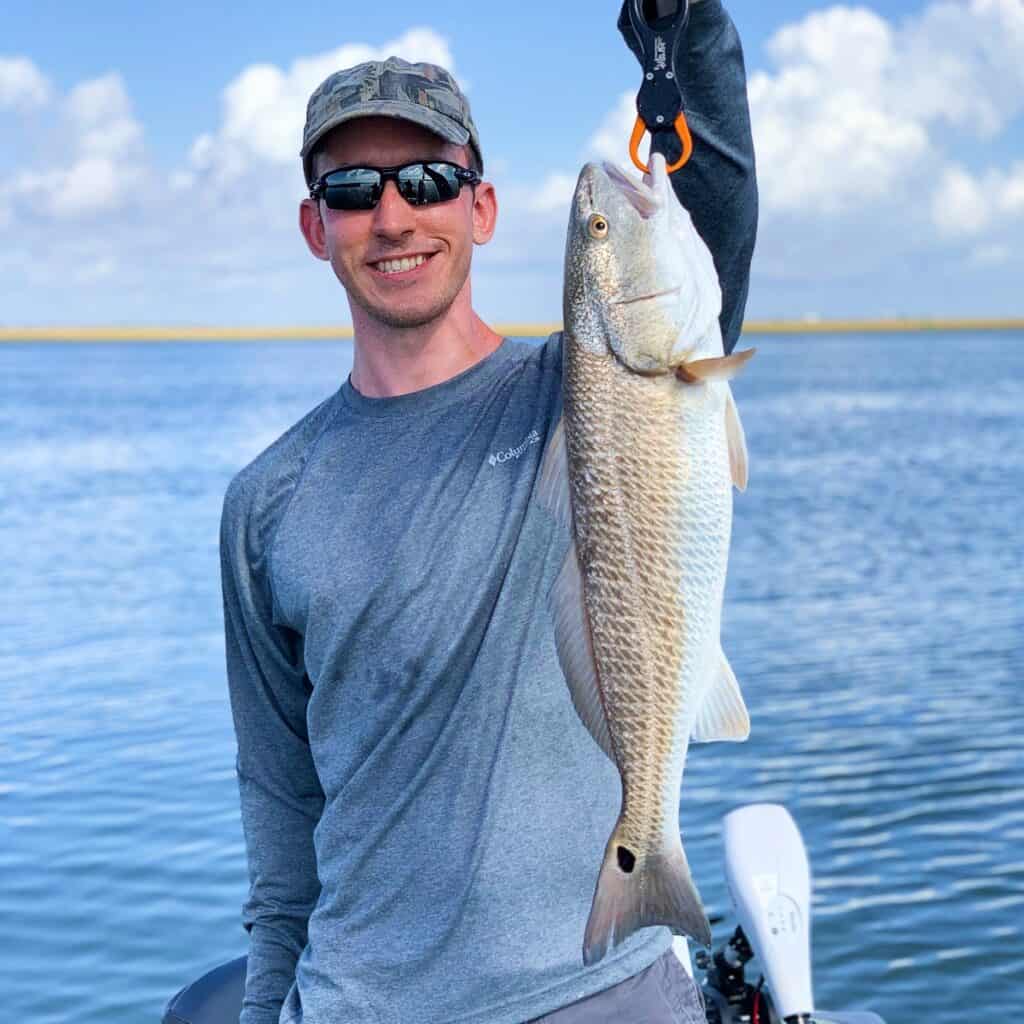
Written By: Andrew Juran
Andrew is a seasoned angler with over 25 years of experience fishing across the United States. He has caught hundreds of fish using various techniques and mentored many in the art of fishing. An advocate for sustainable fishing, Andrew is an active member of the Coastal Conservation Association, an organization committed to marine conservation.
For frequent fishing tips, behind-the-scenes looks, and real-time catches, connect with Andrew on Instagram



